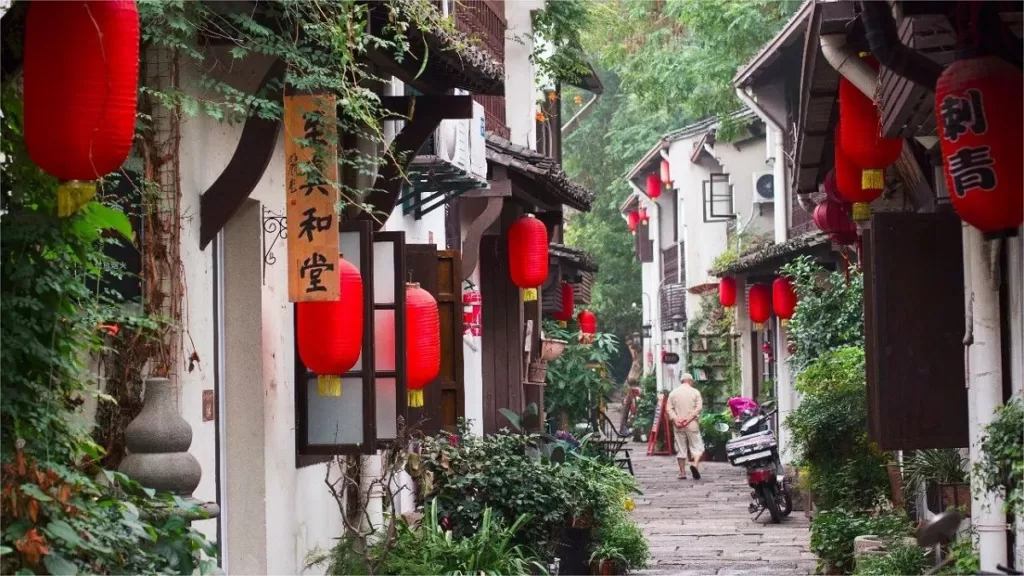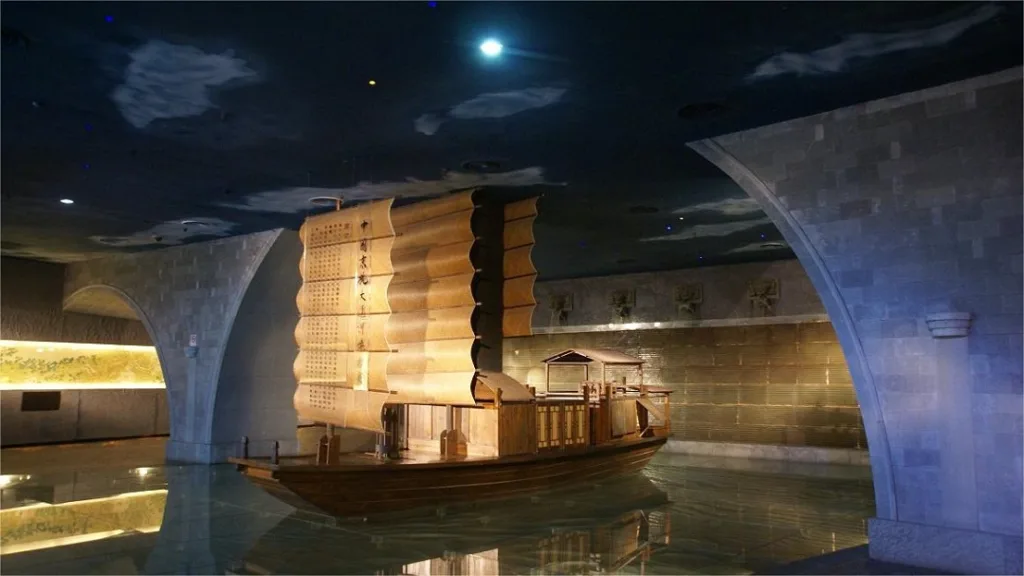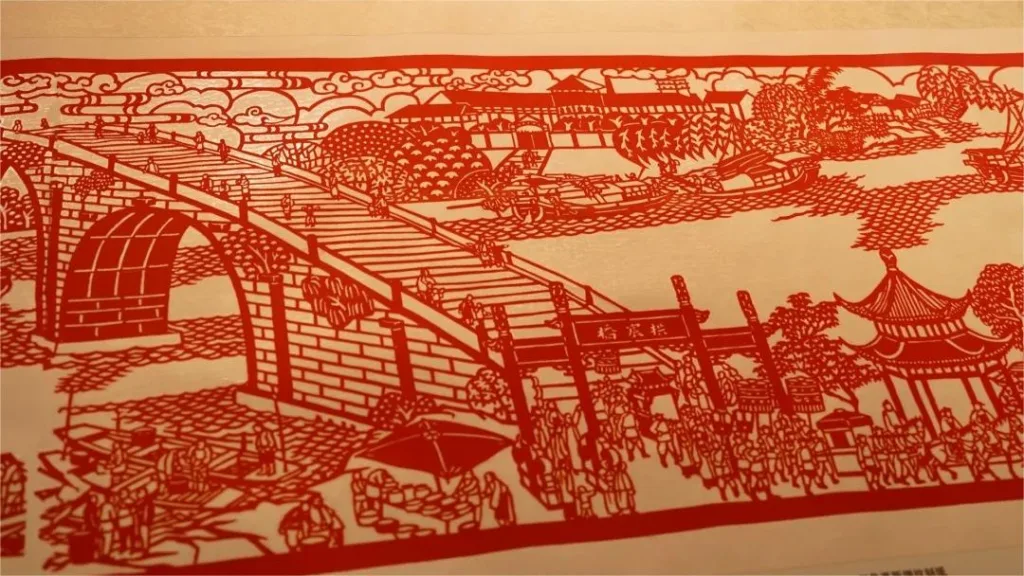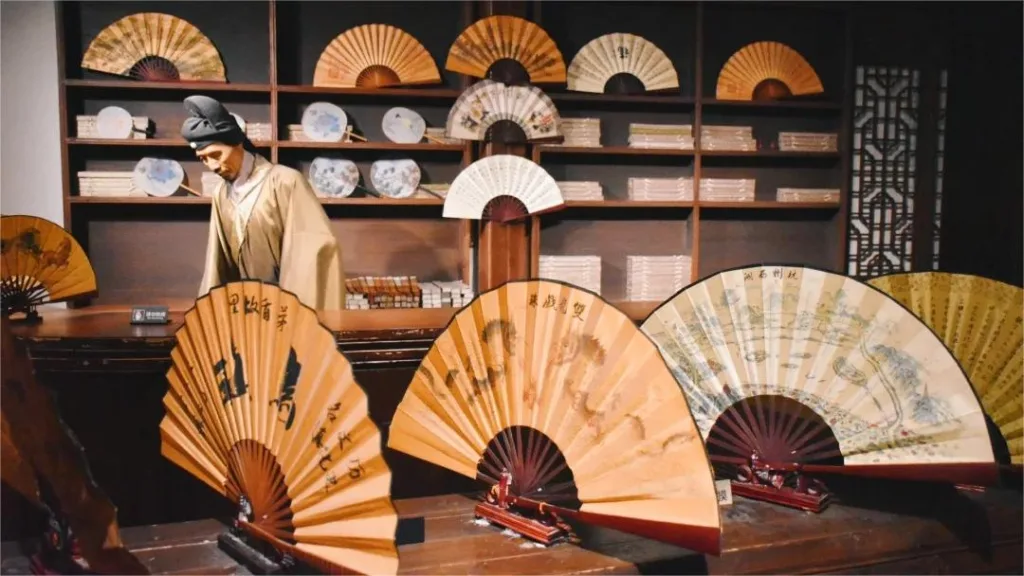Dadou Road Historical and Cultural Block (大兜路历史文化街区), located on the eastern bank of the section between Daguang Bridge and Jiangzhang Bridge along the Grand Canal, preserves significant relics such as the Xiangji Temple Pagoda, the National Silk Reserve Warehouse, and numerous Qing Dynasty and early Republican-era residential buildings. It stands as one of the remaining historical districts in the old city of Hangzhou.
During the Song Dynasty, the area around Daguang Bridge, Jiangzhang Bridge, and Maoyu Bridge served as crucial trade hubs in northern Hangzhou, which corresponds to the present-day Dadou Road area. The name “Dadou Road” dates back to the Ming Dynasty, spanning 1100 meters long and 5 meters wide. During the Ming and Qing Dynasties, markets were established in the Dadou Road area, along with government-operated grain storehouses, making it a vital center for markets, trade, and storage in northern Hangzhou. The banks of the Grand Canal were lined with docks for both water and land transport, while shops flourished, creating a bustling market scene. Today, Dadou Road Historical and Cultural Block stands as a testament to Hangzhou’s rich history and architectural heritage, offering visitors a glimpse into its storied past.
Table of Contents
- Basic Information
- Location and Transportation
- Highlights of Dadou Road Block
- Vlog about Dadou Road
- Attractions near Dadou Road
Basic Information
| Estimated Length of Tour | 0.5 – 1 hour |
| Ticket Price | Free |
| Opening Hours | 24 hours a day throughout the year |
Location and Transportation
The Dadou Road Historical and Cultural Block is situated in the Gongshu District of Hangzhou City, Zhejiang Province, China. Specifically, it spans along Dadou Road, stretching from Daguang Bridge to Jiangzhang Bridge. To get there, you can take bus 132 and get off at Dadoulu Stop (大兜路站).
Highlights of Dadou Road Block
North Entrance Plaza

Situated east of Daguang Bridge, the plaza welcomes visitors with a distinctive grid-like structure adorned with fish-themed motifs. Through immersive vignettes, it vividly portrays the bustling atmosphere of the Dadou Fish Market, depicting fishermen catching fish, transporting fresh catches, and engaging in lively negotiations. The adjacent buildings, with their traditional whitewashed walls, tiled roofs, and adorned with red lanterns, recreate the scenic beauty of “Jiang Bridge Fish Fires,” one of the famous scenes from the Eight Views of Lake Villa.
Residential Quarters

Nestled in the northern segment of Dadou Road, stretching from the northern entrance of the historical and cultural block to the National Silk Reserve Warehouse in the south, lies the residential area. Here, the architectural charm of Qing Dynasty and early Republican-era residential buildings is preserved, arranged in courtyard-style compounds. The revitalized Chongren Temple serves as a central landmark, surrounded by units designed for modern residential living.
Xiangji Temple

Dating back to the third year of the Taiping Xingguo era (978 AD) during the Northern Song Dynasty, Xiangji Temple, originally known as Xingfu Temple, underwent reconstruction and was reopened on February 7, 2010. Covering an area of 16,855 square meters, the temple is primarily dedicated to the Bodhisattva Mahasthamaprapta, making it the only temple in China dedicated to this deity. Its restoration not only preserves architectural heritage but also serves as a spiritual oasis within the bustling historical district.









